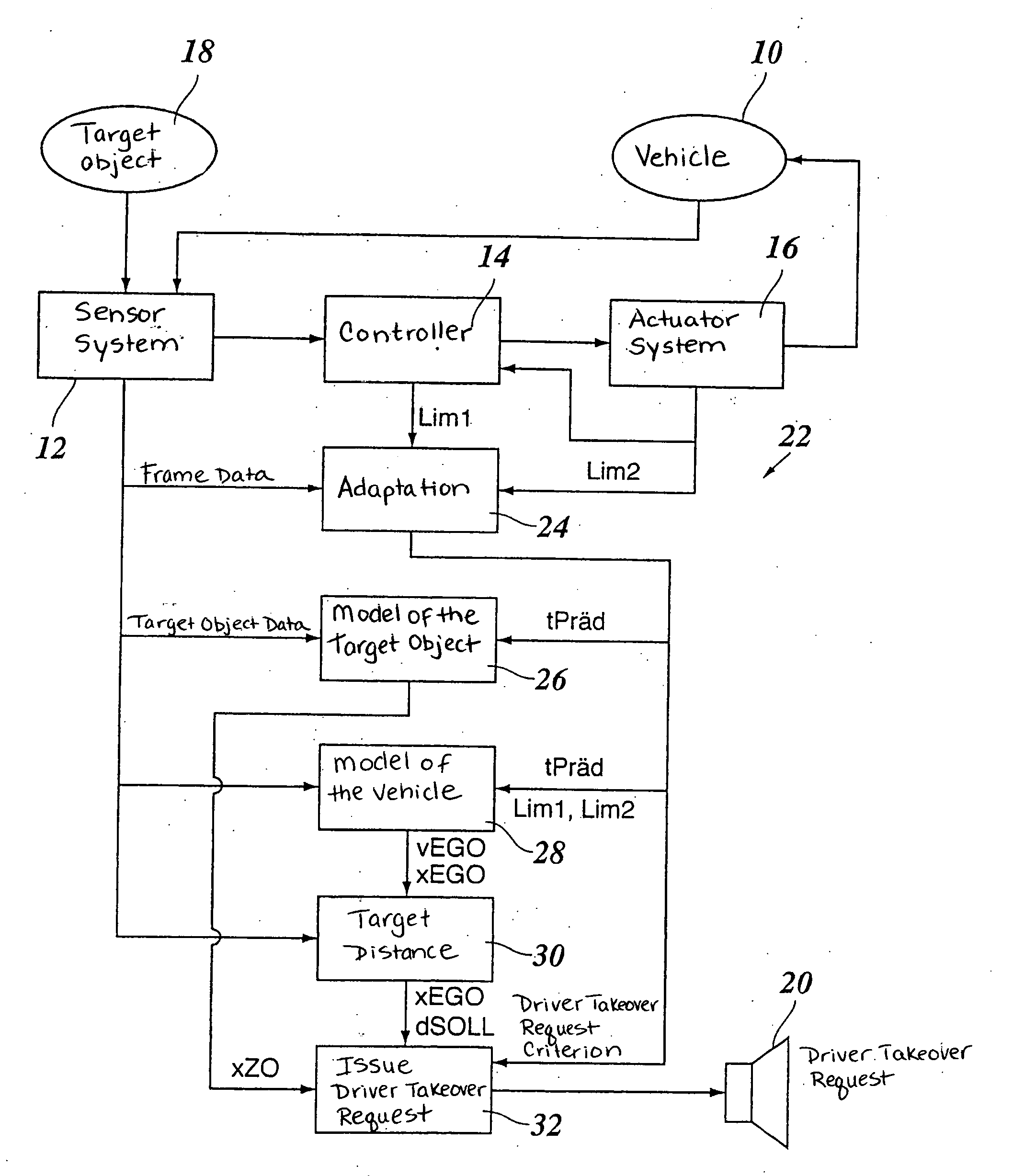Adaptive Cruise Control System for Motor Vehicles
a technology for controlling systems and motor vehicles, applied in brake systems, process and machine control, instruments, etc., to achieve the effects of reducing stress on the driver, increasing traffic safety, and improving driver comfor
- Summary
- Abstract
- Description
- Claims
- Application Information
AI Technical Summary
Benefits of technology
Problems solved by technology
Method used
Image
Examples
Embodiment Construction
[0011] A control system for a motor vehicle 10, called the “own vehicle” (or host vehicle) in the following, has a sensor system 12, a controller 14 formed, for example, by one or more microprocessors, and an actuator system 16 via which the positive or negative acceleration of vehicle 10 is influenced. The sensor system 12 comprises, for example, a radar sensor with which the distance and relative speed of a target object 18, typically a vehicle traveling immediately in front of the own (host) vehicle, are measured. Generally, the radar sensor is also able to detect vehicles in adjoining lanes, as well as vehicles traveling further ahead in the lane of the own vehicle. Moreover, sensor system 12 also includes a number of sensors that provide information about the state of own vehicle 10, e.g., its speed, the currently selected transmission gear, and the like. In addition, additional data of the vehicle can also be acquired, such as the setting options selected by the driver for the...
PUM
 Login to View More
Login to View More Abstract
Description
Claims
Application Information
 Login to View More
Login to View More - R&D
- Intellectual Property
- Life Sciences
- Materials
- Tech Scout
- Unparalleled Data Quality
- Higher Quality Content
- 60% Fewer Hallucinations
Browse by: Latest US Patents, China's latest patents, Technical Efficacy Thesaurus, Application Domain, Technology Topic, Popular Technical Reports.
© 2025 PatSnap. All rights reserved.Legal|Privacy policy|Modern Slavery Act Transparency Statement|Sitemap|About US| Contact US: help@patsnap.com


